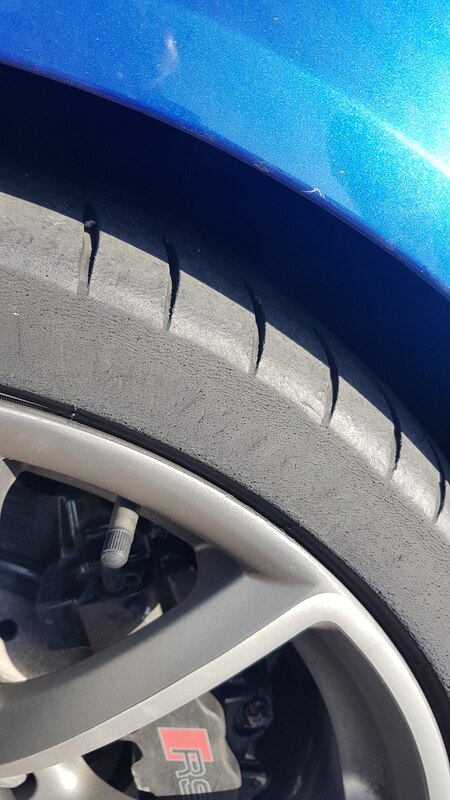“It’s got soft sidewalls!” If you go on the internet, you will see this comment a lot. Obviously, many of you will have squeezed a tyre, and some feel significantly stiffer than others, but what effect does this have?
The significant carcass construction difference between a road and motorsport tyre.
A tyre with “Soft Sidewalls” is a comment about the responsiveness of the tyre when turning at speed, the tyre feels imprecise and a “bit soggy” and the car may understeer more than on another tyre and experience higher than expected shoulder wear.
Typically, in circuit driving we don’t want these characteristics, certainly not in a modern car. Understeer is no fun and low-profile tyres should give us sharper responses. While construction can play a roll, it is possible to combat some of these things if you understand what is happening.
Firstly, compound. Is the tyre being asked too much of? Is it over heating or being over driven?
Tread pattern. Is it an open pattern? Chevron and wet bias tyres frequently have narrow tread patterns that work well in the straight ahead but fold over as they are loaded. The tread is said to be shuffling.
So, to answer the question “what pressures should I run”, is there sufficient pressure in the tyre? It seems a widely accepted thing that 30psi on just about any tyre on any car is “right”. If your tyre feels soggy and rolling on to the side wall, put more pressure in the tyre to support it. Keep checking your tyre and if it is still rolling, put more in. There is no set pressure.
When you do determine the pressure that suits you and your car, it is the hot pressure that matters. Many tyres have been damaged or destroyed by drivers going out on low cold pressures, driving over a curb and damaging the sidewall structure. Start at a reasonable pressure, do three or four laps, then adjust to the pressure you want.
Typically, in circuit driving we don’t want these characteristics, certainly not in a modern car. Understeer is no fun and low-profile tyres should give us sharper responses. While construction can play a roll, it is possible to combat some of these things if you understand what is happening.
Firstly, compound. Is the tyre being asked too much of? Is it over heating or being over driven?
Tread pattern. Is it an open pattern? Chevron and wet bias tyres frequently have narrow tread patterns that work well in the straight ahead but fold over as they are loaded. The tread is said to be shuffling.
So, to answer the question “what pressures should I run”, is there sufficient pressure in the tyre? It seems a widely accepted thing that 30psi on just about any tyre on any car is “right”. If your tyre feels soggy and rolling on to the side wall, put more pressure in the tyre to support it. Keep checking your tyre and if it is still rolling, put more in. There is no set pressure.
When you do determine the pressure that suits you and your car, it is the hot pressure that matters. Many tyres have been damaged or destroyed by drivers going out on low cold pressures, driving over a curb and damaging the sidewall structure. Start at a reasonable pressure, do three or four laps, then adjust to the pressure you want.
Sidewall wear. This tyre needed a lot more air!





